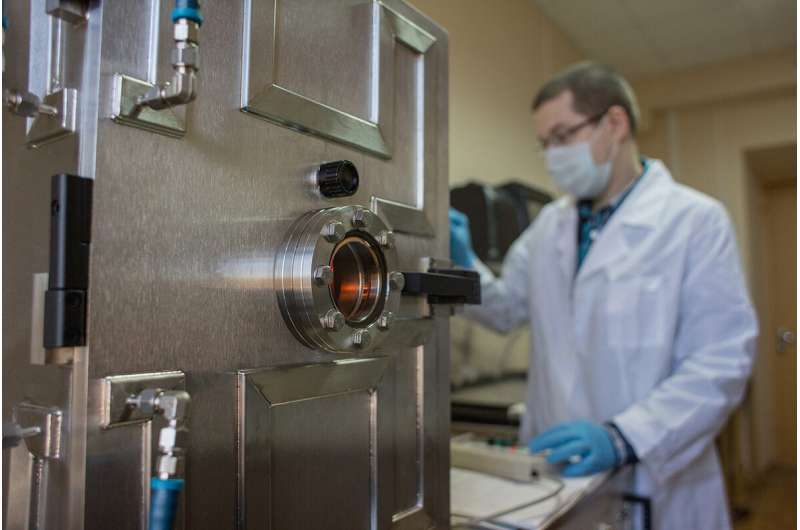Scientists suggest using machine learning to predict materials' properties

Researchers from Peter the Great St.Petersburg Polytechnic University (SPbPU) in collaboration with colleagues from Southern Federal University and Indian Institute of Technology-Madras (IIT Madras) suggested using machine learning methods to predict the properties of artificial sapphire crystals—a unique material widely used in microelectronics, optics and electronics. The results of the study were published in the Journal of Electronic Science and Technology and the illustration from the article was featured on the cover of the journal.
Machine learning methods are becoming increasingly popular in accelerating the design of new materials by predicting material properties. The minimization of various defects in crystal structure is extremely important for the improvement and development of modern technologies for the artificial sapphire crystal growth.
Scientists note that the purpose of the study is to reduce various defects in sapphire crystals and to improve and develop modern technologies for growing artificial crystals.
"Our research team obtained the models of crystal growth parameters' influence on sapphire crystal growth. We developed the software which is considered to be a universal tool for studying the influence of various parameters on the quality of crystals. It can be widely used to assess and predict the defects in a growing crystal," said Alexey Filimonov, Professor of the Higher Engineering Physics School at Peter the Great St. Petersburg Polytechnic University (SPbPU).
Julia Klunnikova, Associate Professor at Southern Federal University (SFU), adds: "We use the scheme where predictive modules are developed separately using the Orange Canvas data mining tool. For the decision support system, our group developed a special software tool for analyzing the quality of the resulting crystals, which allows optimizing the process of crystal growth."
Ravi Kumar, Head of the Laboratory for High Performance Ceramics & Professor in the Dept of Metallurgical and Materials Eng.,at the Indian Institute of Technology-Madras (IIT Madras), is confident that the industrial application of such methods will heighten the automatization level of production of crystals with a predefined combination of properties that can be important for a particular application in micro- and nanoelectronics. The solution of these scientific and engineering problems assumes the use of information technologies in production of crystals at a new level.
Currently, the team of authors is working to increase the number of experimental data, which will provide new opportunities for prediction and increase its accuracy. It is planned to recognize crystal images from the furnace chamber and to forecast the conditions' influence on the crystal quality.
More information: Yulia Vladimirovna Klunnikova et al, Machine Learning Application for Prediction of Sapphire Crystals Defects, Journal of Electronic Science and Technology (2020). DOI: 10.1016/j.jnlest.2020.100029
Provided by Peter the Great Saint-Petersburg Polytechnic University




















